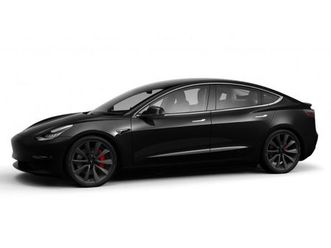Cruise control also helps you stay at the right speed limit without constant adjustments, potentially avoiding expensive speeding tickets on long trips. And It eases the strain on the driver during extended trips by reducing manual acceleration. Here are some ways to adjust the speed while using cruise control in your Tesla Model 3:
2017 – 2023 Models
Traditional Cruise Control:
- You can set the speed using the +/- speed button.
- You can also accelerate as normal until the desired speed is reached. Then you press a button to have the Tesla Model 3 maintain that speed.
Adaptive Cruise Control:
- You can change the set speed by pressing the “+”/RESUME or “-”/SET button repeatedly until the system shows your desired speed.
- You can press and hold either button to change the set speed in large increments. Release the button when the set speed shown is equal to the speed you prefer.
- You can adjust the set speed tolerance that is above or below the detected speed limit.
- You can change a set speed by pressing the (1) or (2) buttons briefly or by pressing and holding them.
FAQS
At what speed can I set cruise control?
The speed at which you can set cruise control depends on the vehicle and the road conditions, but generally, it is recommended to use cruise control on roadways without frequent stops, turns, or required driving maneuvers and at speeds between 55 and 70 miles per hour. It is important to follow the legal speed limit and any minimum speed requirements for the Tesla Model 3.
When Should You Not Use Cruise Control?
Cruise control is generally safe as long as you use it appropriately and exercise caution in certain situations. Enjoy the convenience, but stay alert. Here are some things to watch out for:
- Prolonged use of cruise control may lead to delayed brake response, compromising reaction time and potentially causing accidents and injuries.
- Some drivers might feel claustrophobic and irritated, which can contribute to aggressive driving behavior.
- It’s important to avoid using cruise control on winding roads, in heavy traffic, or when approaching bridges or exits.


